Abstract
Optimal cell yield of Pseudomonas aeruginosa grown under denitrifying conditions was obtained with 100 mM nitrate as the terminal electron acceptor, irrespective of the medium used. Nitrite as the terminal electron acceptor supported poor denitrifying growth when concentrations of less than 15 mM, but not higher, were used, apparently owing to toxicity exerted by nitrite. Nitrite accumulated in the medium during early exponential phase when nitrate was the terminal electron acceptor and then decreased to extinction before midexponential phase. The maximal rate of glucose and gluconate transport was supported by 1 mM nitrate or nitrite as the terminal electron acceptor under anaerobic conditions. The transport rate was greater with nitrate than with nitrite as the terminal electron acceptor, but the greatest transport rate was observed under aerobic conditions with oxygen as the terminal electron acceptor. When P. aeruginosa was inoculated into a denitrifying environment, nitrate reductase was detected after 3 h of incubation, nitrite reductase was detected after another 4 h of incubation, and maximal nitrate and nitrite reductase activities peaked together during midexponential phase. The latter coincided with maximal glucose transport activity.
Full text
PDF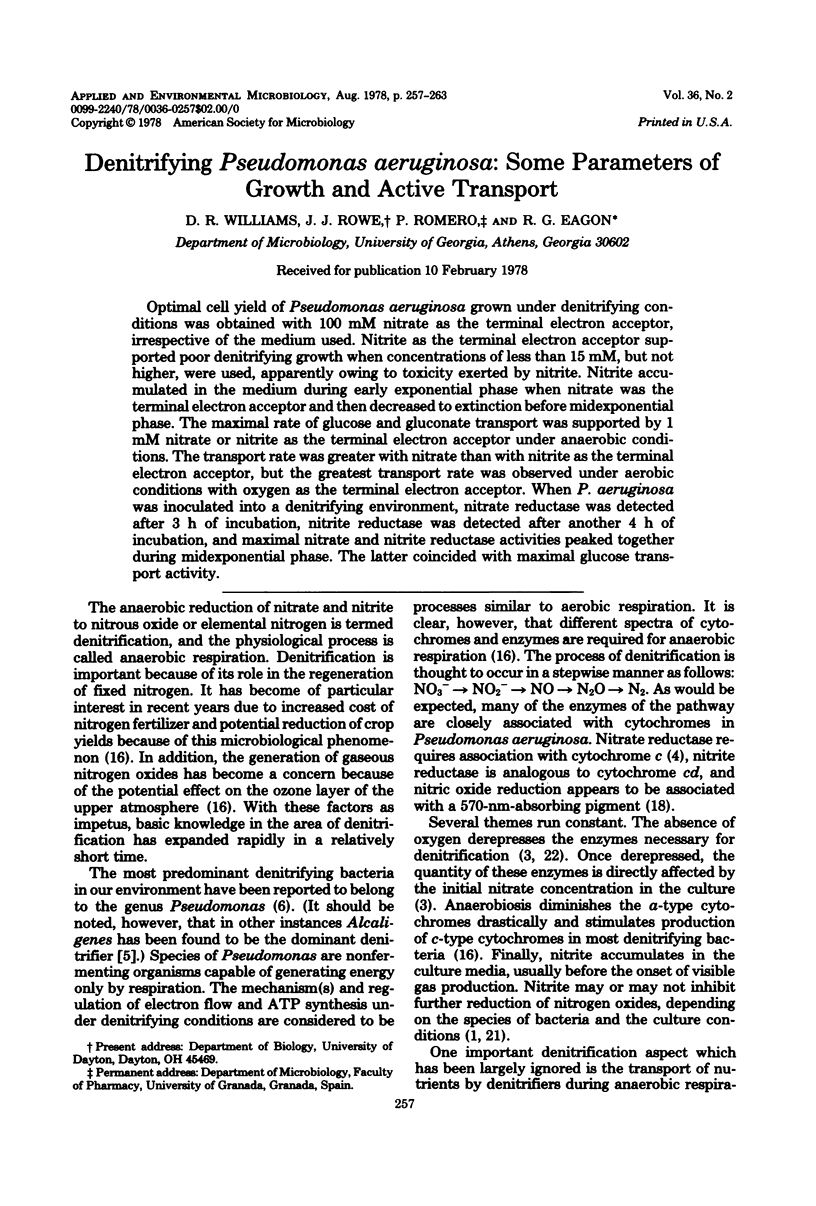
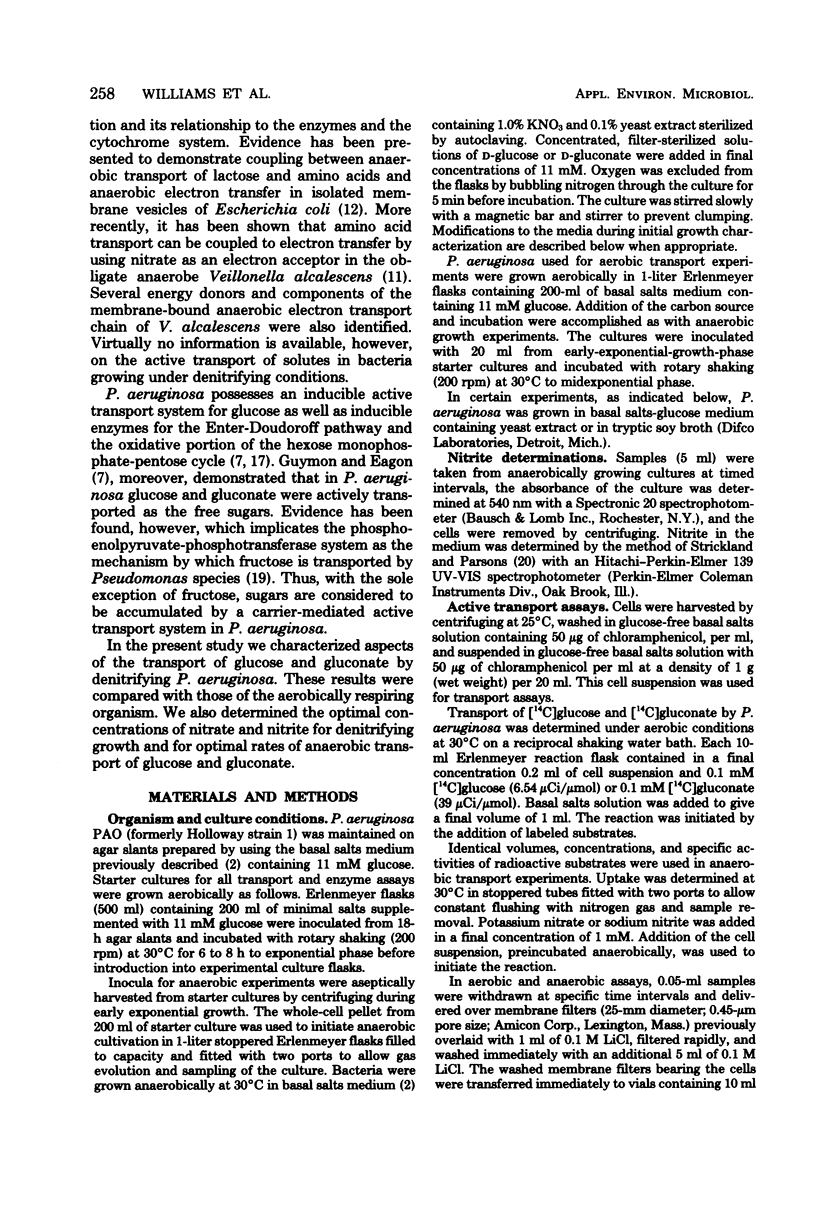
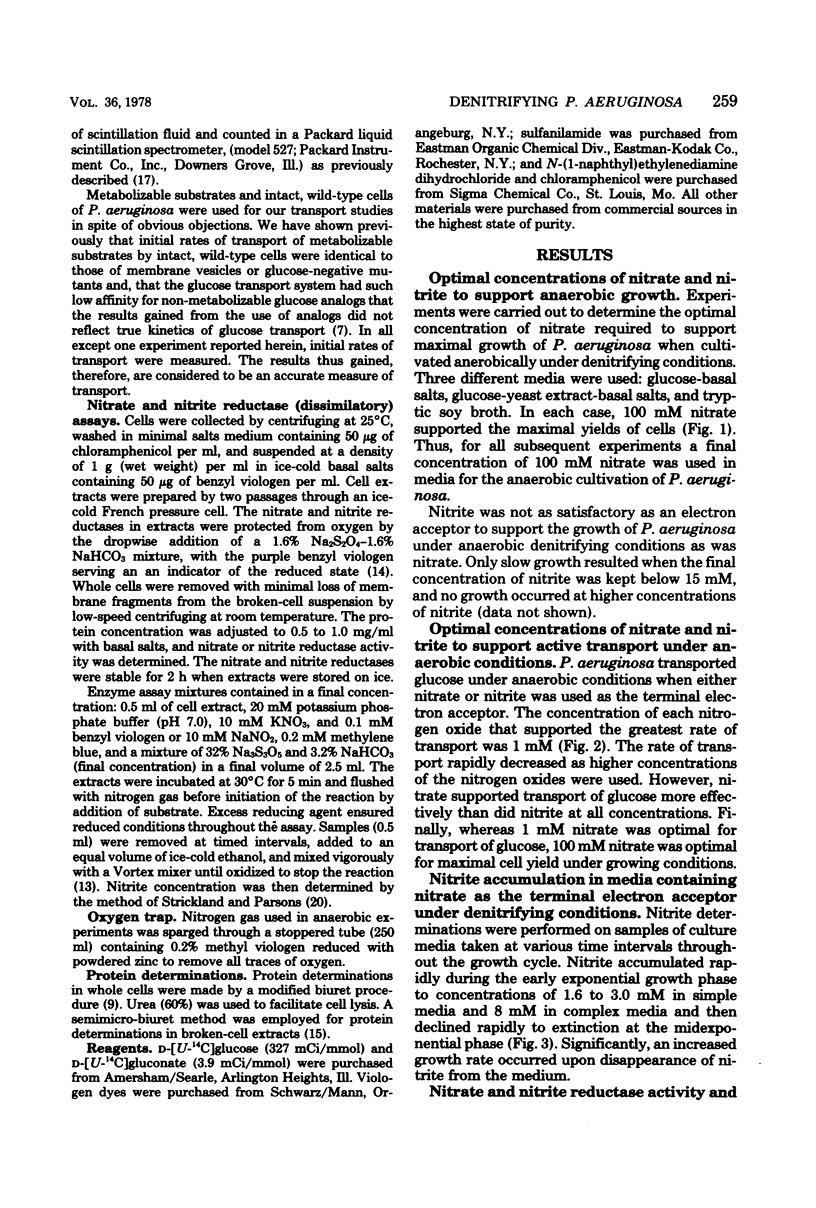
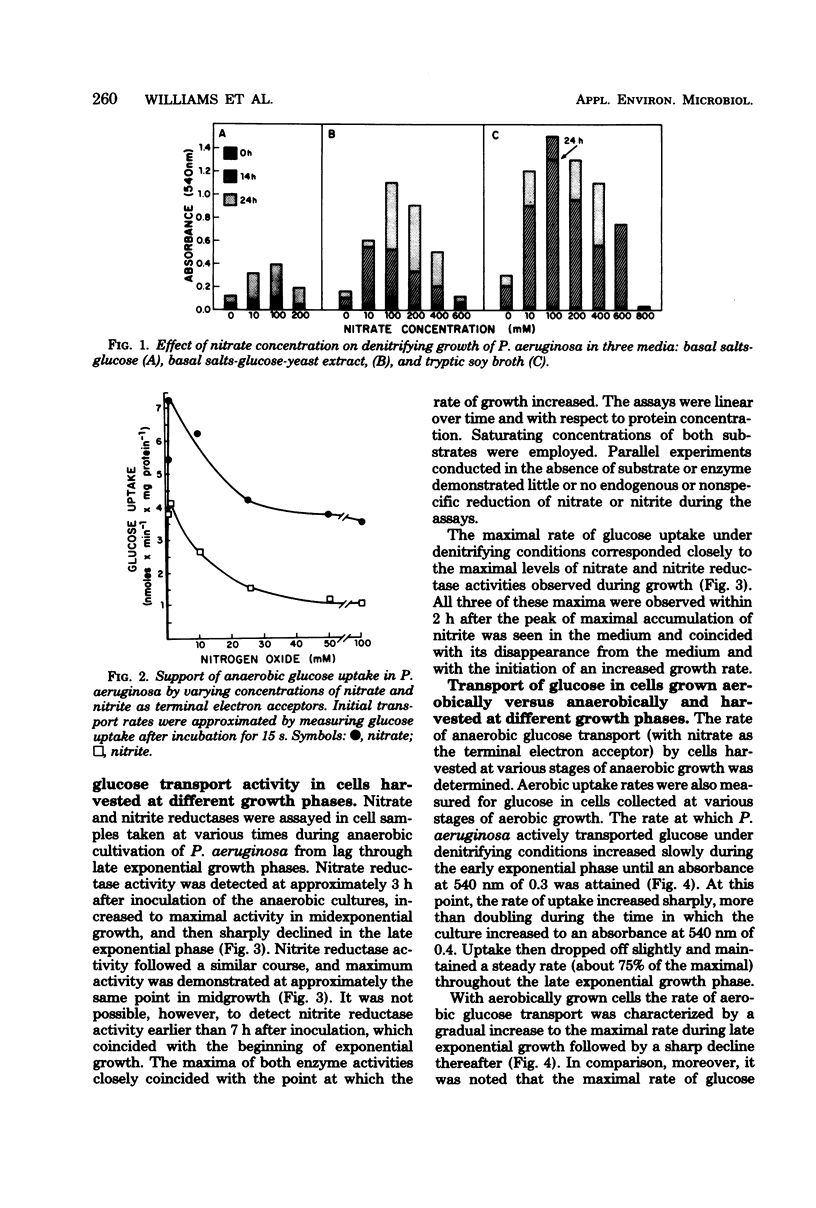
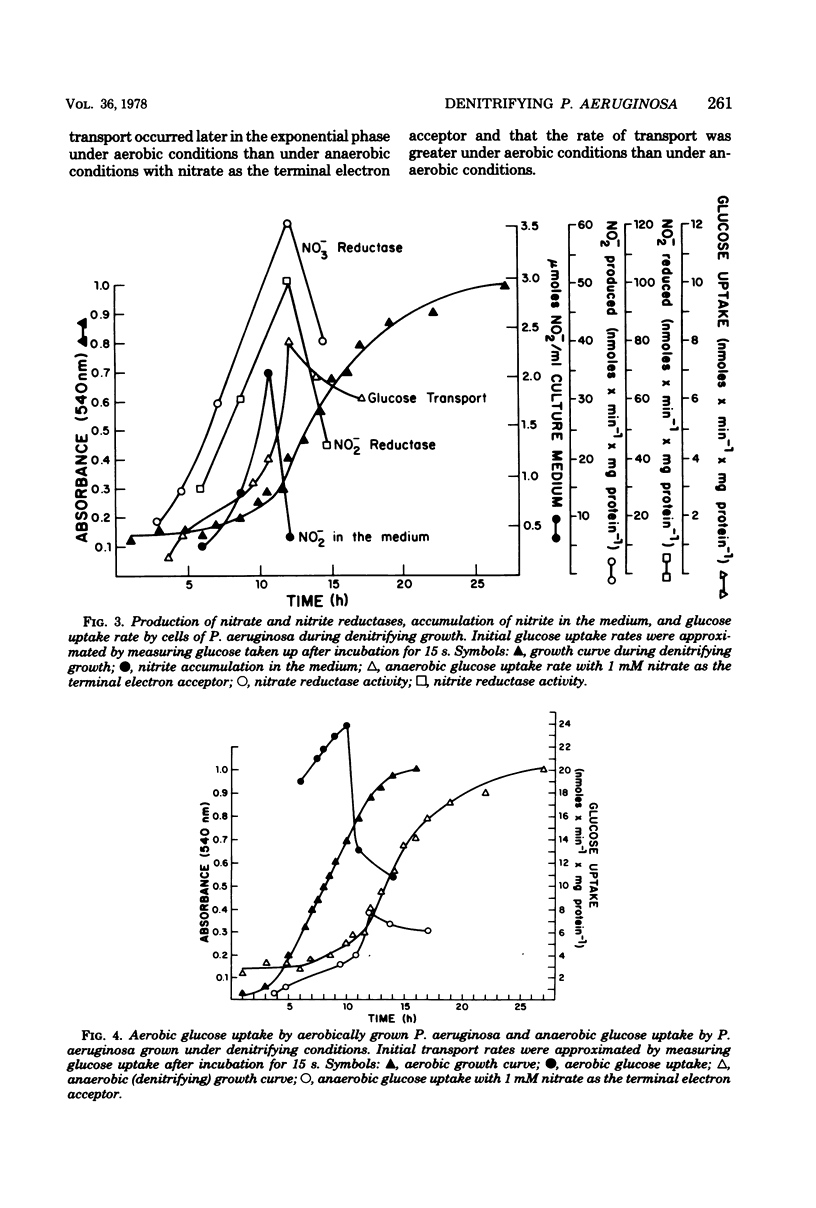

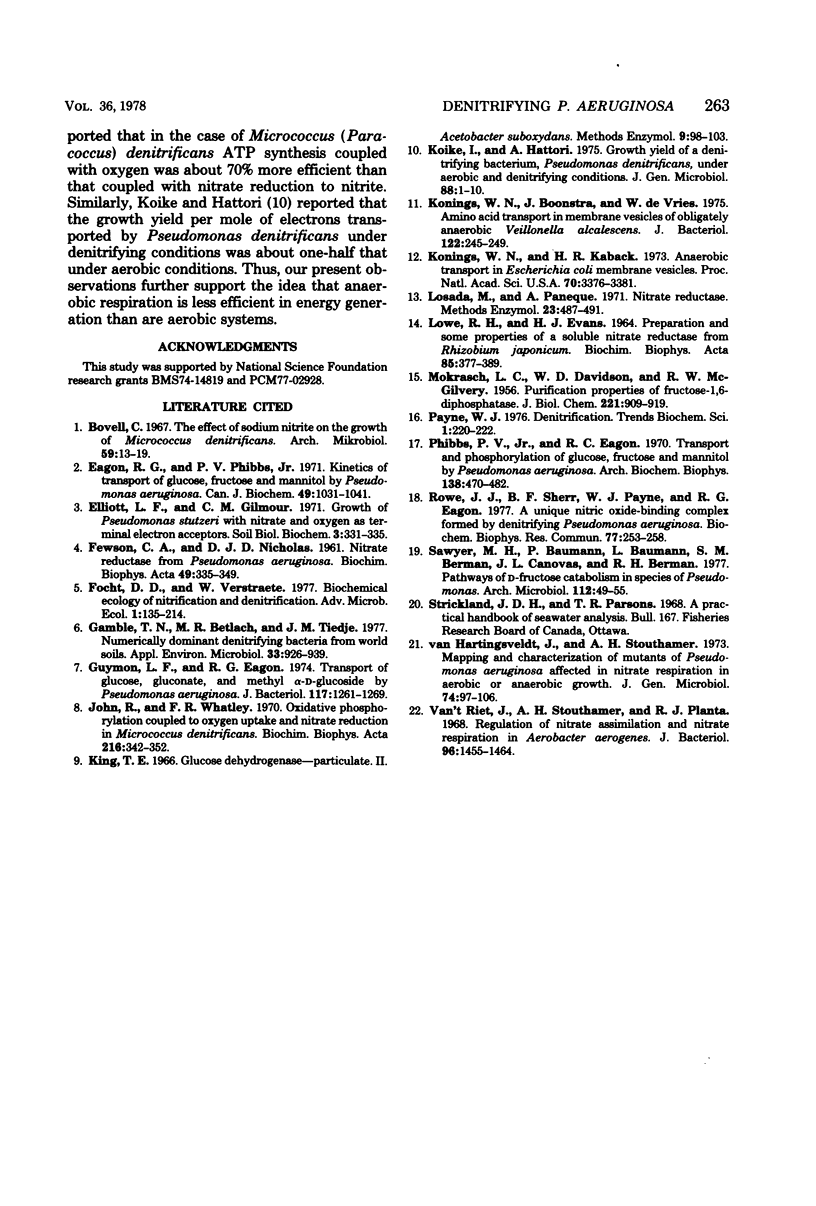
Selected References
These references are in PubMed. This may not be the complete list of references from this article.
- 't Riet J van, Stouthamer A. H., Planta R. J. Regulation of nitrate assimilation and nitrate respiration in Aerobacter aerogenes. J Bacteriol. 1968 Nov;96(5):1455–1464. doi: 10.1128/jb.96.5.1455-1464.1968. [DOI] [PMC free article] [PubMed] [Google Scholar]
- Bovell C. The effect of sodium nitrite on the growth of Micrococcus denitrificans. Arch Mikrobiol. 1967;59(1):13–19. doi: 10.1007/BF00406312. [DOI] [PubMed] [Google Scholar]
- Eagon R. G., Phibbs P. V., Jr Kinetics of transport of glucose, fructose, and mannitol by Pseudomonas aeruginosa. Can J Biochem. 1971 Sep;49(9):1031–1041. doi: 10.1139/o71-151. [DOI] [PubMed] [Google Scholar]
- FEWSON C. A., NICHOLAS D. J. Nitrate reductase from Pseudomonas aeruginosa. Biochim Biophys Acta. 1961 May 13;49:335–349. doi: 10.1016/0006-3002(61)90133-0. [DOI] [PubMed] [Google Scholar]
- Gamble T. N., Betlach M. R., Tiedje J. M. Numerically dominant denitrifying bacteria from world soils. Appl Environ Microbiol. 1977 Apr;33(4):926–939. doi: 10.1128/aem.33.4.926-939.1977. [DOI] [PMC free article] [PubMed] [Google Scholar]
- Guymon L. F., Eagon R. G. Transport of glucose, gluconate, and methyl alpha-D-glucoside by Pseudomonas aeruginosa. J Bacteriol. 1974 Mar;117(3):1261–1269. doi: 10.1128/jb.117.3.1261-1269.1974. [DOI] [PMC free article] [PubMed] [Google Scholar]
- John P., Whatley F. R. Oxidative phosphorylation coupled to oxygen uptake and nitrate reduction in Micrococcus denitrificans. Biochim Biophys Acta. 1970 Sep 1;216(2):342–352. doi: 10.1016/0005-2728(70)90225-2. [DOI] [PubMed] [Google Scholar]
- Koike I., Hattori A. Growth yield of a denitrifying bacterium, Pseudomonas denitrificans, under aerobic and denitrifying conditions. J Gen Microbiol. 1975 May;88(1):1–10. doi: 10.1099/00221287-88-1-1. [DOI] [PubMed] [Google Scholar]
- Konings W. N., Boonstra J., De Vries W. Amino acid transport in membrane vesicles of obligately anaerobic Veillonella alcalescens. J Bacteriol. 1975 Apr;122(1):245–249. doi: 10.1128/jb.122.1.245-249.1975. [DOI] [PMC free article] [PubMed] [Google Scholar]
- Konings W. N., Kaback H. R. Anaerobic transport in Escherichia coli membrane vesicles. Proc Natl Acad Sci U S A. 1973 Dec;70(12):3376–3381. doi: 10.1073/pnas.70.12.3376. [DOI] [PMC free article] [PubMed] [Google Scholar]
- LOWE R. H., EVANS H. J. PREPARATION AND SOME PROPERTIES OF A SOLUBLE NITRATE REDUCTASE FROM RHIZOBIUM JAPONICUM. Biochim Biophys Acta. 1964 Jun 1;85:377–389. doi: 10.1016/0926-6569(64)90301-3. [DOI] [PubMed] [Google Scholar]
- Phibbs P. V., Jr, Eagon R. G. Transport and phosphorylation of glucose, fructose, and mannitol by Pseudomonas aeruginosa. Arch Biochem Biophys. 1970 Jun;138(2):470–482. doi: 10.1016/0003-9861(70)90371-1. [DOI] [PubMed] [Google Scholar]
- Rowe J. J., Sherr B. F., Payne W. J., Eagon R. G. A unique nitric oxide-binding complex formed by denitrifying Pseudomonas aeruginosa. Biochem Biophys Res Commun. 1977 Jul 11;77(1):253–258. doi: 10.1016/s0006-291x(77)80190-3. [DOI] [PubMed] [Google Scholar]
- Sawyer M. H., Baumann P., Baumann L., Berman S. M., Cánovas J. L., Berman R. H. Pathways of D-fructose catabolism in species of Pseudomonas. Arch Microbiol. 1977 Feb 4;112(1):49–55. doi: 10.1007/BF00446653. [DOI] [PubMed] [Google Scholar]
- van Hartingsveldt J., Stouthamer A. H. Mapping and characerization of mutants of Pseudomonas aeruginosa affected in nitrate respiration in aerobic or anaerobic growth. J Gen Microbiol. 1973 Jan;74(1):97–106. doi: 10.1099/00221287-74-1-97. [DOI] [PubMed] [Google Scholar]


